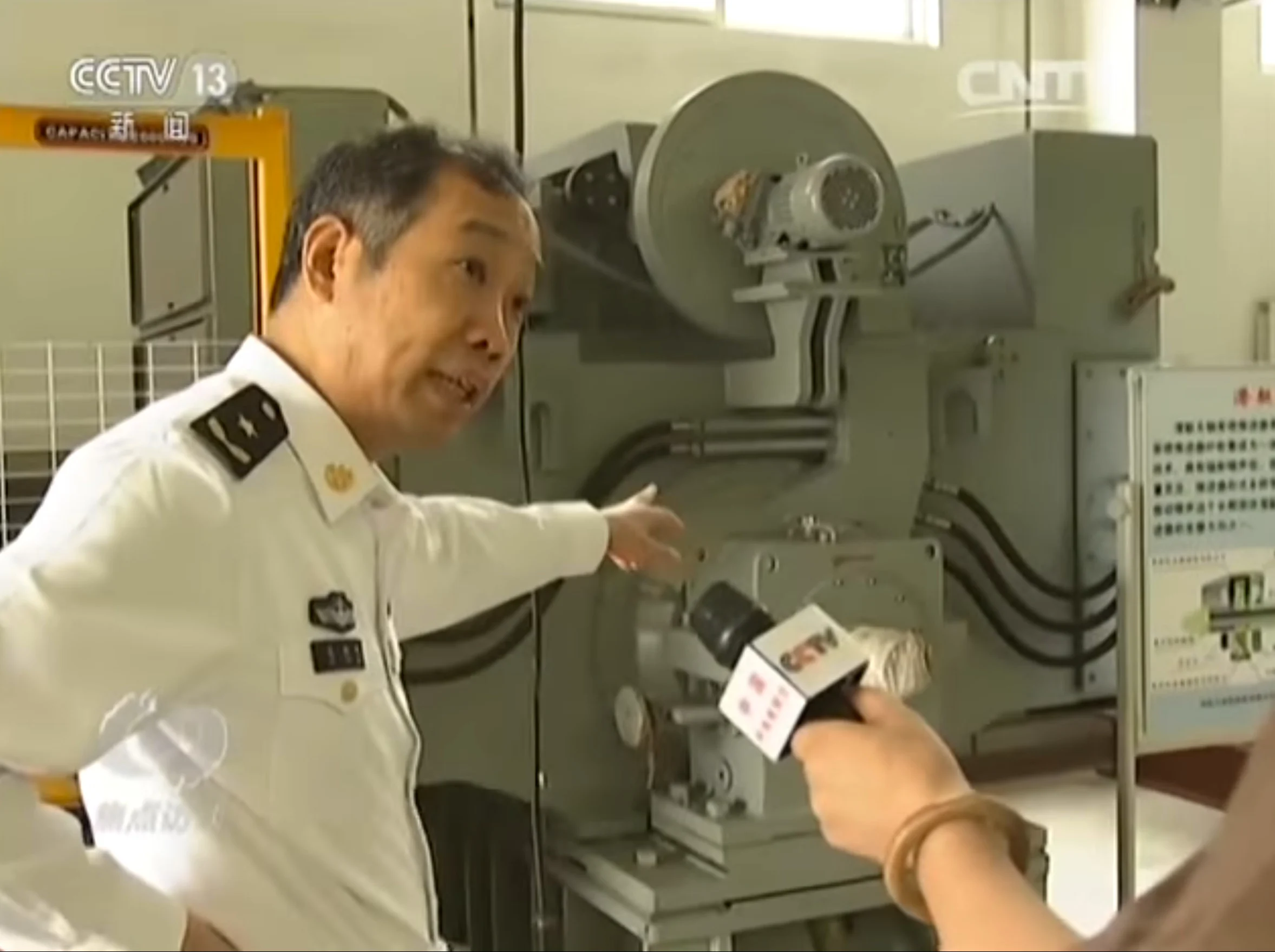Copyright scmp

Only a select few People’s Liberation Army officers attended last week’s commissioning of the Fujian, but among them was Rear Admiral Ma Weiming – the man whose technological breakthrough put the aircraft carrier among the most advanced of its kind. Known as the father of the Chinese electromagnetic aircraft launch system (EMALS), Ma also fundamentally altered naval warfare with a string of innovations that has put China “one generation ahead” in several critical areas. There were no initial plans to equip the conventionally powered Fujian with the world’s most advanced catapult system – until Ma suggested it. At the time, the only carrier equipped with the complex technology was the USS Gerald Ford, which entered service that year. Decades and billions of dollars later, the system has so far failed to launch its shipborne F-35C stealth fighters. For the designers of the Fujian – China’s third aircraft carrier and the first to be indigenously designed – the steam catapult seemed a more pragmatic and safe option. It was a mature technology used on most of the US Navy’s active carriers, as well as the French carrier Charles de Gaulle and many other retired vessels from other countries. Ma, a professor at the PLA Naval University of Engineering who had been working for two decades on ship power technologies based on direct current (DC), was confident that his approach could be used to power a similarly advanced launch system. “If we are doing it, we go for the cutting-edge. If we want to lead, we overtake the Americans,” he told the state broadcaster. “We should never wait until foreigners make it and then follow.” EMALS promised more frequent launches and heavier planes than ski jumps, greatly increasing combat capabilities. The technology would also be more energy efficient, maintenance friendly and flexible, compared with steam catapults. “We need this technology. We must carry on, regardless of difficulties,” Ma said. In all, just eight years passed between Ma’s initial proposal for the system and the completion of the design. Official videos from sea trials earlier this year showed the Fujian’s electromagnetic catapult system successfully launching all types of Chinese fixed-wing ship-borne aircraft. These included the fifth-generation J-35, making it the first stealth fighter launched by EMALS in the world. The videos also showed the system launching the naval fighter J-15’s catapult variant J-15T and the carrier-based early warning and control aircraft KJ-600. In stark contrast to its Western counterparts, the Chinese navy is also adopting the technology more widely, installing the EMALS on its Type 076 amphibious assault ship, potentially making it a drone carrier. China and the West chose different technical paths around 20 years ago, thanks to the adoption of Ma’s proposal for an integrated power system (IPS) based on DC technology. The switch from the alternating current (AC) systems still used by Western navies meant that China had “taken the lead in the field of integrated power systems for ships”, Ma wrote in a peer-reviewed paper published last year. Modern guided-missile destroyers in both the US Navy’s Zumwalt-class and Britain’s Type 45 are powered by AC-based IPS and all have encountered serious problems, for example. A reluctant genius Born in 1960 in a rural area of Jiangsu province in eastern China, Ma thought the military would be too rigid a place for a “free-spirited and rebellious” child like him. He had no intention of taking that path when he sat for the college entrance exams in 1978. Instead he was reallocated to study at the Naval Engineering College – now the PLA Naval University of Engineering – a place that he never applied for, Ma said. “From the bottom of my heart, I never wanted to go to a military academy … But if I turned it down, I would be banned from retaking the exam next year,” he recalled. “Creativity and exploration demand freedom. How could it be confined by military discipline?” Ma’s talent and creativity survived and thrived, with the naval electrical engineering student becoming deeply engaged in cutting-edge research and tackling a number of world-class challenges. He first rose to prominence in the 1990s as a young naval engineer when he identified a flaw in a foreign-made generator intended for Chinese submarines. Working in a laboratory converted from an abandoned shower room, Ma fixed the multimillion-dollar problem at a cost of only 35,000 yuan (US$5,000). His most fundamental breakthrough came in the field of integrated power systems when he proposed the concept of an integrated AC/DC generator that would be more reliable and compact than the traditional systems, as well as more powerful. He later mass-produced them for Chinese submarines. The achievement won Ma multiple top state awards in science and technology, as well as membership of the Chinese Academy of Engineering, becoming its youngest academician at 41. He also developed a shaftless pump-jet propulsion system for submarines which greatly lowered their acoustic signatures, improving survivability. But it was his DC-based IPS for larger surface ships which consolidated all energy generation, distribution and consumption into a single power grid without the electromagnetic interference issues that occur with AC. In addition to greater stability, better noise reduction, manoeuvrability and efficiency, Ma’s system allowed simplified integration of high-power loads like EMALS. In a single leap it transformed China’s ship propulsion technology into a world leader. “These are advantages, but the primary goal was still to solve the challenge of putting high-energy weapons aboard warships,” said Ma, whose team has worked on rail guns and coilguns which launch projectiles at speeds traditional artillery could never achieve. Accelerated by the electromagnetic fields between two parallel rails or through a series of coils, these weapons share a similar physical mechanism with EMALS. The PLA Navy tested a ship-mounted rail gun as early as 2018, and is reported to have trialled the planet’s most powerful coil gun in 2023. On display in this year’s Victory Day parade was the LY-1, a large ship-based laser device and another high-energy weapon that requires a massive, instant burst of power that is only possible because of the DC IPS. When Ma was promoted to the Communist Party’s Central Committee in 2019, a People’s Daily commentary referred to him as a “national treasure” and praised his “clustered breakthroughs” in electromagnetic launch technology. Within only a few years, Ma had “fully pushed forward a revolution in China’s weapons development from one based on chemical energy to electromagnetic energy”, it said. More straightforwardly, Ma’s magician-like achievements in electromagnetic applications have earned him the nickname “Magneto” among some Chinese military fans.



